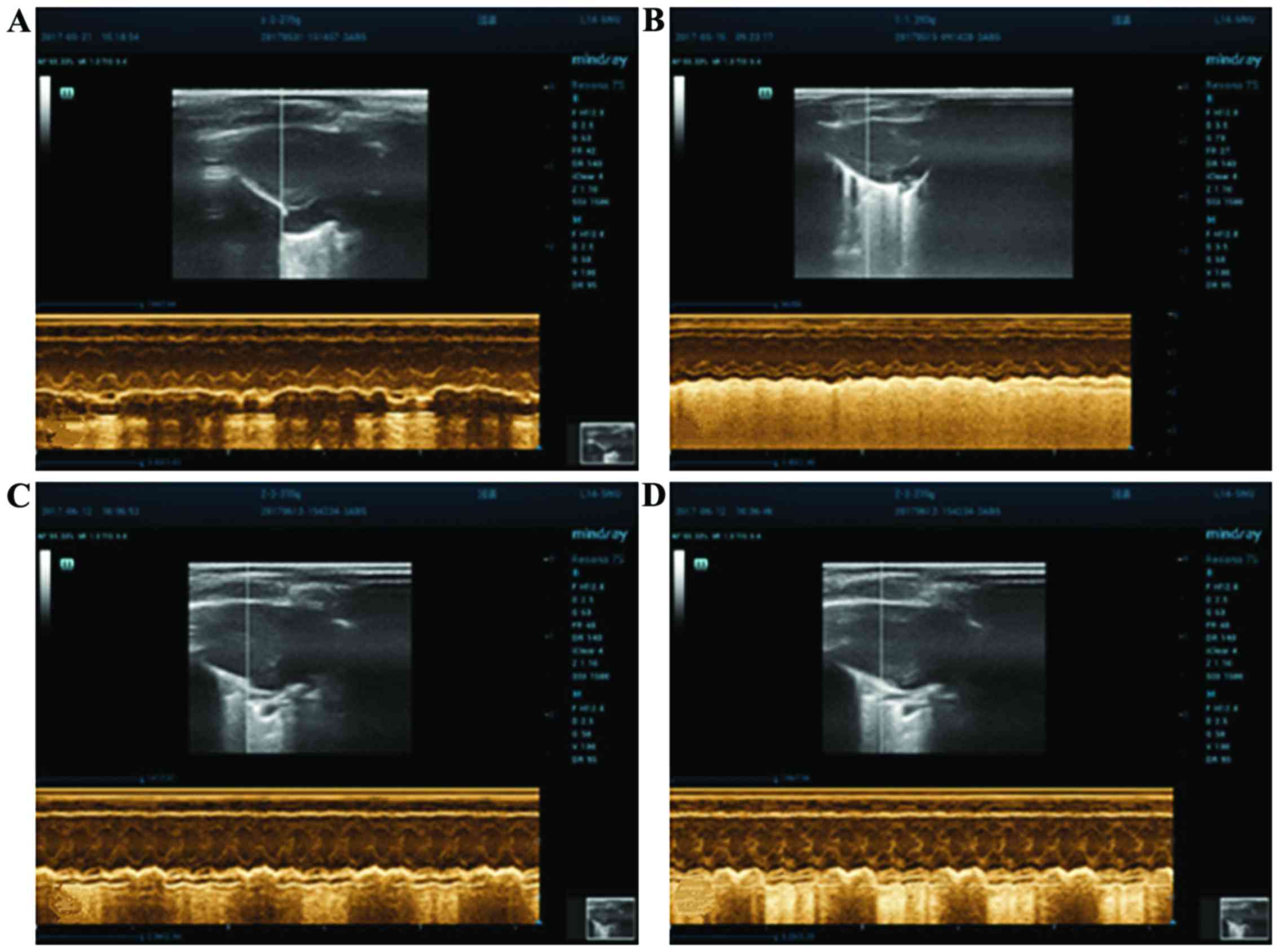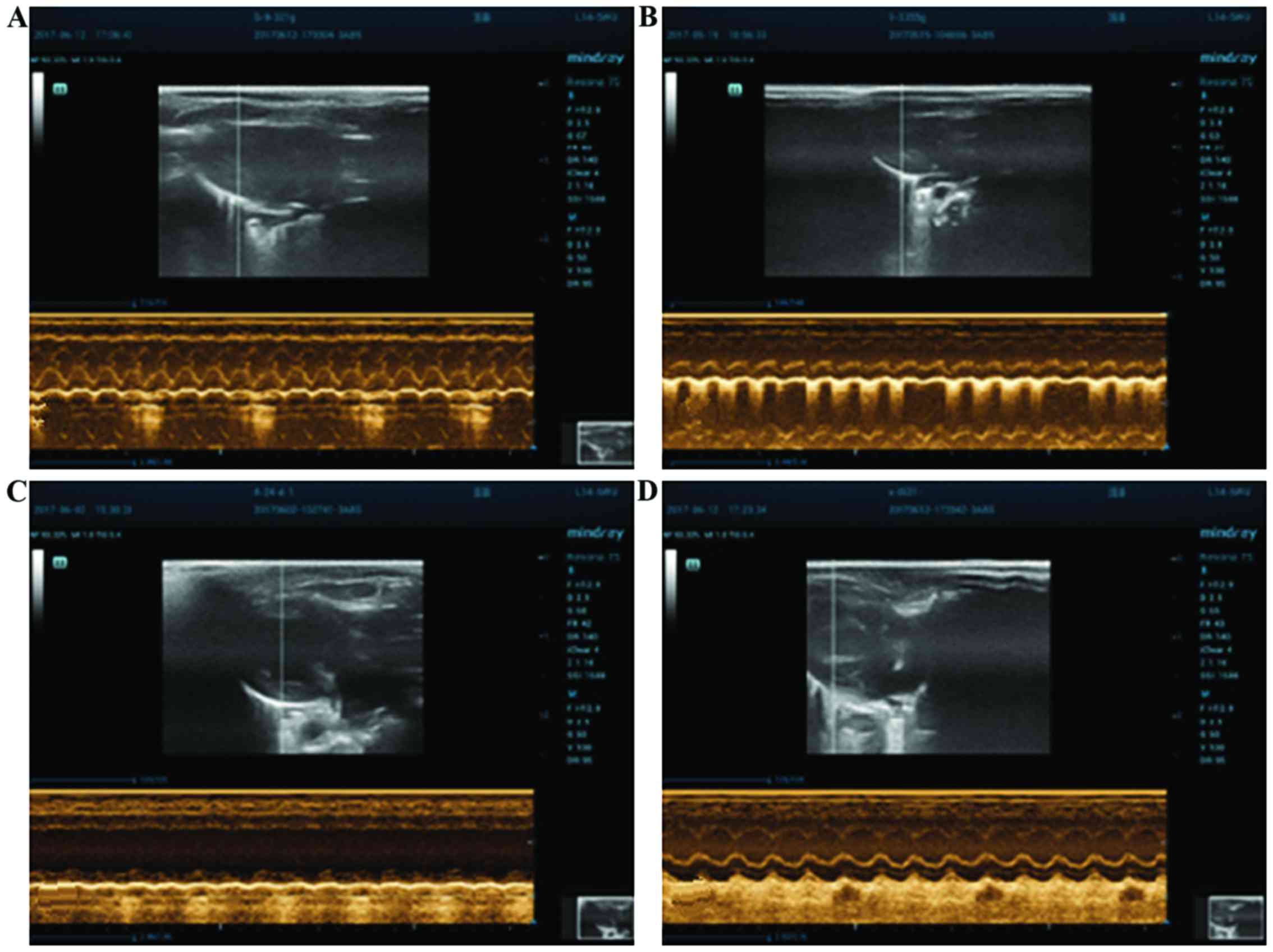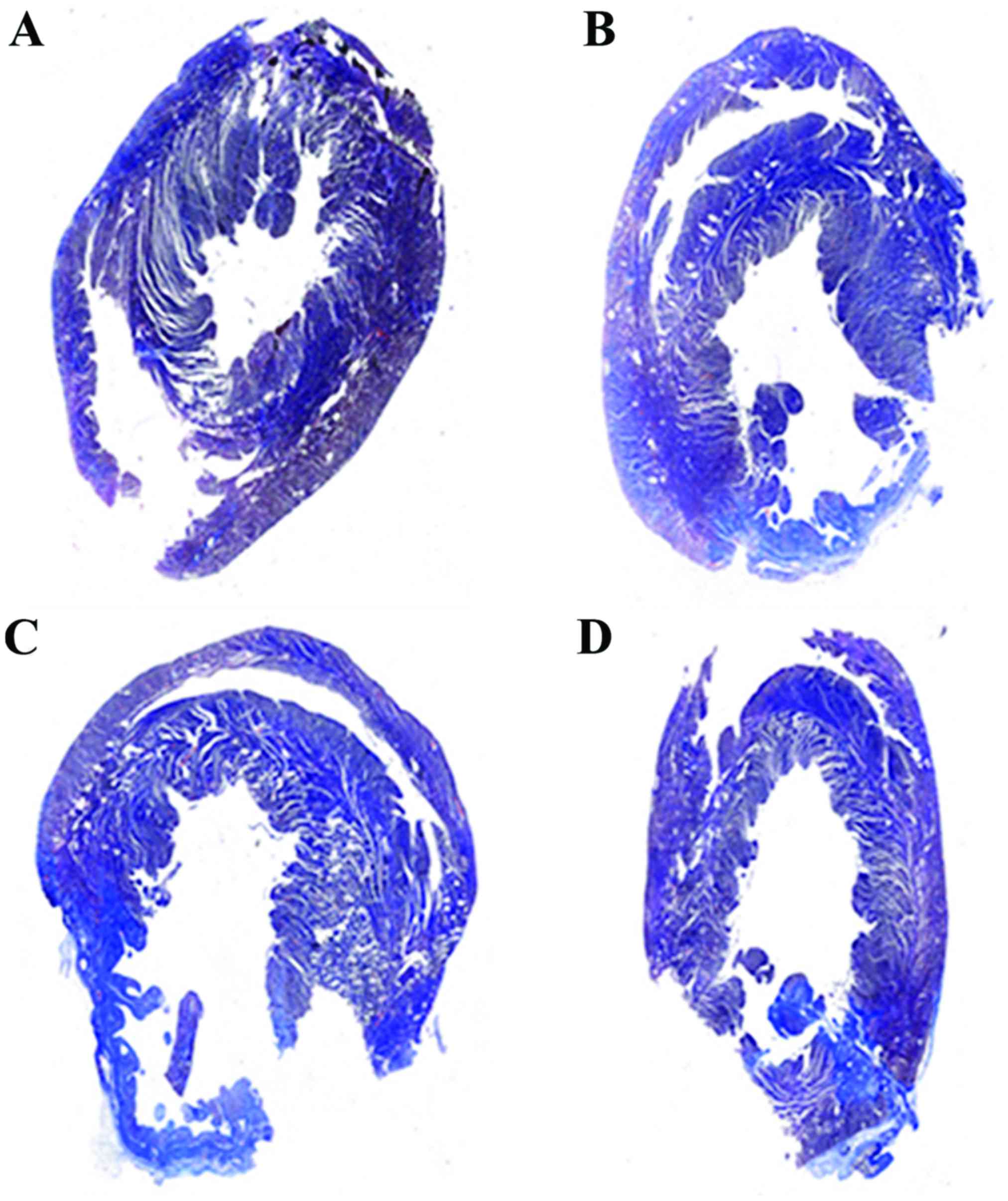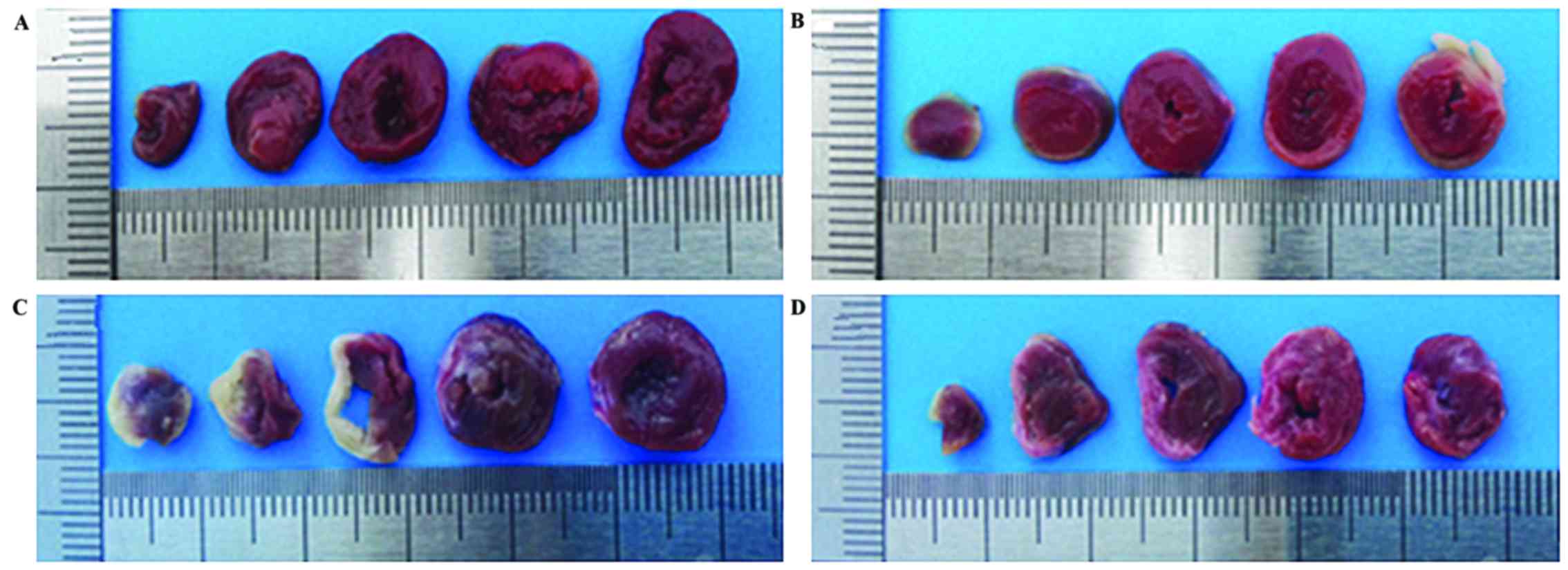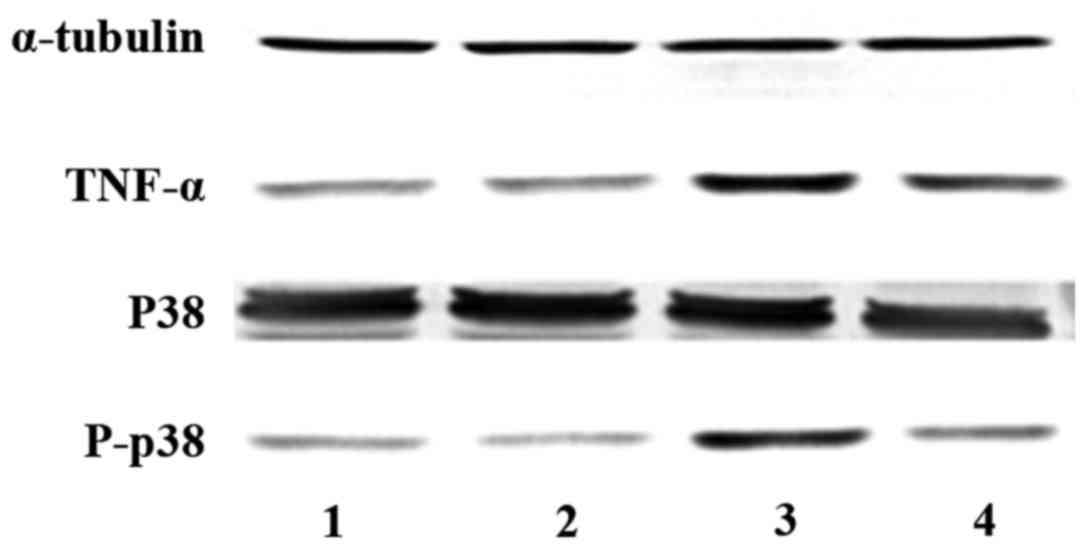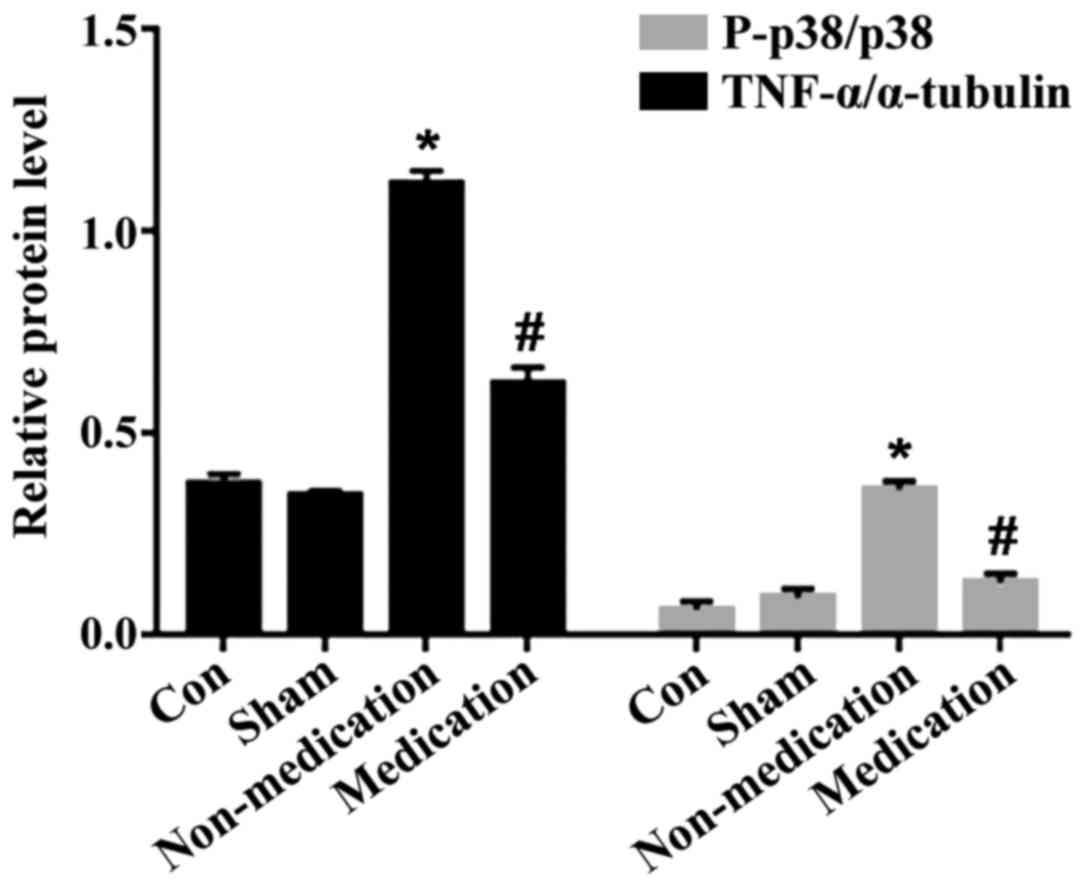|
1
|
Chen J, Cao W, Asare PF, Lv M, Zhu Y, Li
L, Wei J, Gao H, Zhang H, et al: Amelioration of cardiac
dysfunction and ventricular remodeling after myocardial infarction
by danhong injection are critically contributed by
anti-TGF-β-mediated fibrosis and angiogenesis mechanisms. J
Ethnopharmacol. 194:559–570. 2016. View Article : Google Scholar : PubMed/NCBI
|
|
2
|
Kumagai S, Nakayama H, Fujimoto M, Honda
H, Serada S, Ishibashi-Ueda H, Kasai A, Obana M1, Sakata Y, et al:
Myeloid cell-derived LRG attenuates adverse cardiac remodelling
after myocardial infarction. Cardiovasc Res. 109:272–282. 2016.
View Article : Google Scholar : PubMed/NCBI
|
|
3
|
Velasquez LS, Sutherland LB, Liu Z,
Grinnell F, Kamm KE, Schneider JW, Olson EN and Small EM:
Activation of MRTF-A-dependent gene expression with a small
molecule promotes myofibroblast differentiation and wound healing.
Proc Natl Acad Sci U S A. 110:16850–16855. 2013. View Article : Google Scholar : PubMed/NCBI
|
|
4
|
Sobirin MA, Kinugawa S, Akahashi M,
Fukushima A, Homma T, Ono T, Hirabayashi K, Suga T, Azalia P, et
al: Activation of natural killer T cells ameliorates postinfarct
cardiac remodeling and failure in mice. Circ Res: Aug 10, 2012
(Epub ahead of print). https://doi.org/10.1161/CIRCRESAHA.112.270132
|
|
5
|
Qi HP, Wang Y, Zhang QH, Guo J, Li L, Cao
YG, Li SZ, Li XL, Shi MM, et al: Activation of peroxisome
proliferator-activated receptor γ (PPARγ) through NF-κB/Brg1 and
TGF-β1 pathways attenuates cardiac remodeling in
pressure-overloaded rat hearts. Cell Physiol Biochem. 35:899–912.
2015. View Article : Google Scholar : PubMed/NCBI
|
|
6
|
Berwanger O, de Barros E, Silva PG,
Barbosa RR, Precoma DB, Figueiredo EL, Hajjar LA, Kruel CD, Alboim
C, Almeida AP, Dracoulakis MD, et al: Atorvastatin for high-risk
statin-naïvepatients undergoing noncardiac surgery: The lowering
the risk of operative complications using atorvastatin loading dose
(LOAD) randomized trial. Am Heart J. 184:88–96. 2017. View Article : Google Scholar : PubMed/NCBI
|
|
7
|
Reichert K, Pereira do Carmo HR, Galluce
Torina A, Diógenes de Carvalho D, Carvalho Sposito A, de Souza
Vilarinho KA, da Mota Silveira-Filho L, Martins de Oliveira PP and
Petrucci O: Atorvastatin improves ventricular remodeling after
myocardial infarction by interfering with collagen metabolism. PLoS
One. 11:e01668452016. View Article : Google Scholar : PubMed/NCBI
|
|
8
|
Puhl SL, Müller A, Wagner M, Devaux Y,
Böhm M, Wagner DR and Maack C: Exercise attenuates inflammation and
limits scar thinning after myocardial infarction in mice. Am J
Physiol Heart and Circ Physiol. 309:345–359. 2015.https://doi.org/10.1152/ajpheart.00683.2014
View Article : Google Scholar
|
|
9
|
Song XJ, Yang CY, Liu B, Wei Q, Korkor MT,
Liu JY and Yang P: Atorvastatin inhibits myocardial cell apoptosis
in a rat model with post-myocardial infarction heart failure by
downregulating ER stress response. Int J Med Sci. 8:564–572. 2011.
View Article : Google Scholar : PubMed/NCBI
|
|
10
|
An Z, Yang G, He YQ, Dong N, Ge LL, Li SM
and Zhang WQ: Atorvastatin reduces myocardial fibrosis in a rat
model with post-myocardial infarction heart failure by increasing
the matrix metalloproteinase-2/tissue matrix metalloproteinase
inhibitor-2 ratio. Chin Med J (Engl). 126:2149–2156.
2013.PubMed/NCBI
|
|
11
|
Tang XL, Sanganalmath SK, Sato H, Bi Q,
Hunt G, Vincent RJ, Peng Y, Shirk G, Dawn B and Bolli R:
Atorvastatin therapy during the peri-infarct period attenuates left
ventricular dysfunction and remodeling after myocardial infarction.
PLoS One. 6:e253202011. View Article : Google Scholar : PubMed/NCBI
|
|
12
|
Song MA, Dasgupta C and Zhang L: Chronic
losartan treatment up-regulates AT1R and increases the heart
vulnerability to acute onset of ischemia and reperfusion injury in
male rats. PLoS One. 10:e01327122015. View Article : Google Scholar : PubMed/NCBI
|
|
13
|
Thygesen K, Alpert JS and White HD; Joint
ESC/ACCF/AHA/WHFTask Force for the redefinition of myocardial
infarction: Universal definition of myocardial infarction. J Am
Coll Cardiol. 50:2173–2195. 2007. View Article : Google Scholar : PubMed/NCBI
|
|
14
|
Fan Z, Fu M, Xu Z, Zhang B, Li Z, Li H,
Zhou X, Liu X, Duan Y, Lin PH, et al: Sustained release of a
peptide-based MatrixMetalloproteinase-2 inhibitor to attenuate
adverse cardiac remodeling and improve cardiac function following
myocardial infarction. Biomacromolecules. 18:2820–2829. 2017.
View Article : Google Scholar : PubMed/NCBI
|
|
15
|
Heeger CH, Jaquet K, Thiele H, Zulkarnaen
Y, Cuneo A, Haller D, Kivelitz D, Schmidt T, Krause K, Metzner A,
et al: Percutaneous, transendocardial injection of bone
marrow-derived mononuclear cells in heart failure patients
following acute ST-elevation myocardial infarction: ALSTER-Stem
Cell trial. EuroIntervention. 8:732–742. 2012. View Article : Google Scholar : PubMed/NCBI
|
|
16
|
Ma H, Liu Y, Xie H, Zhang G, Zhan H, Liu
Z, Wang P, Geng Q and Guo L: The renoprotective effects of
simvastatin and atorvastatin in patients with acute coronary
syndrome undergoing percutaneous coronary intervention: An
observational study. Medicine. 96:e73512017. View Article : Google Scholar : PubMed/NCBI
|
|
17
|
Remy G, Risco AM, Iñesta-Vaquera FA,
González-Terán B, Sabio G, Davis RJ and Cuenda A: Differential
activation of p38MAPK isoforms by MKK6 and MKK3. Cell Signal.
22:660–667. 2010. View Article : Google Scholar : PubMed/NCBI
|
|
18
|
Corre I, Paris F and Huot J: The p38
pathway, a major pleiotropic cascade that transduces stress and
metastatic signals in endothelial cells. Oncotarget. 8:55684–55714.
2017. View Article : Google Scholar : PubMed/NCBI
|
|
19
|
Udalova I, Monaco C, Nanchahal J and
Feldmann M: Anti-TNF therapy. Microbiol Spectr. 4:2016.doi:
10.1128/microbiolspec. MCHD-0022-2015. PubMed/NCBI
|
|
20
|
Zhang P, Wu X, Li G, He Q, Dai H, Ai C and
Shi J: Tumor necrosis factor-alpha gene polymorphisms and
susceptibility to ischemic heart disease: A systematic review and
meta-analysis. Medicine (Baltimore). 96:e65692017. View Article : Google Scholar : PubMed/NCBI
|
|
21
|
Chen H, Xu Y, Wang J, Zhao W and Ruan H:
Baicalin ameliorates isoproterenol-induced acute myocardial
infarction through iNOS, inflammation and oxidative stress in rat.
Int J Clin Exp Pathol. 8:10139–10147. 2015.PubMed/NCBI
|
|
22
|
Chen WL, Sheu JR, Chen RJ, Hsiao SH, Hsiao
CJ, Chou YC, Chung CL and Hsiao G: Mycobacterium tuberculosis
upregulates TNF-α expression via TLR2/ERK signaling and induces
MMP-1 and MMP-9 production in human pleural mesothelial cells. PLoS
One. 10:e01379792015. View Article : Google Scholar : PubMed/NCBI
|
|
23
|
Sato F, Kohsaka A, Takahashi K, Otao S,
Kitada Y, Iwasaki Y and Muragaki Y: Smad3 and Bmal1 regulate p21
and S100A4 expression in myocardial stromal fibroblasts via TNF-α.
Histochem Cell Biol. 148:617–624. 2017. View Article : Google Scholar : PubMed/NCBI
|



